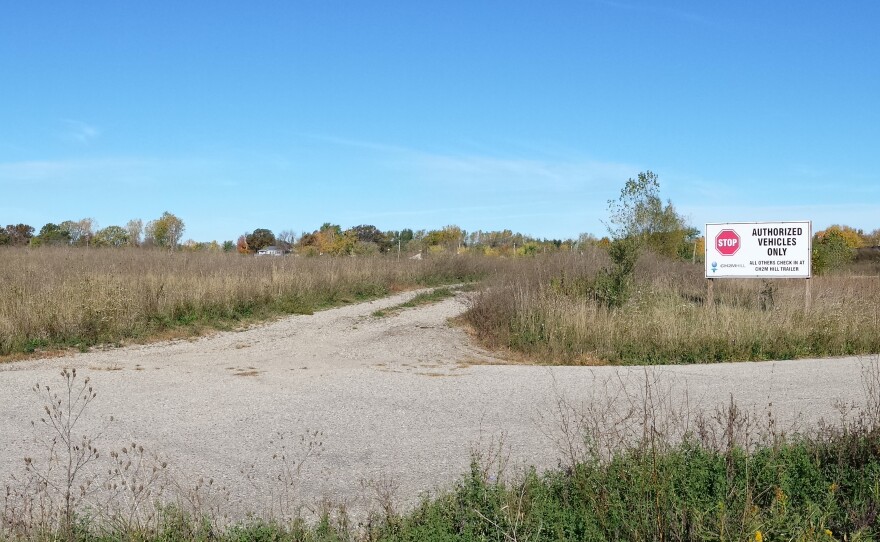Forty years ago a chemical mix-up led to one of Michigan’s worst environmental tragedies, and it’s not over yet.
The mix-up occurred in early 1973 at the former Michigan Chemical Corporation plant (which later became the Velsicol Chemical Corporation) in St. Louis, Mich. The company accidentally shipped flame-retardant chemicals to livestock farms around the state.
Farmers thought they were getting a feed supplement. Instead, they were dosing their animals with the toxic chemical PBB.
The problem wasn’t discovered for another year -- and the chemicals were passed up the food chain to humans.
You can read and see more about that history in this Detroit Free Press piece.
Many types of chemicals were produced at the former factory, about 50 miles north of Lansing, including pesticides like DDT.
The Velsicol Chemical Corporation closed in St. Louis in 1978, leaving behind a massive soup of pollution buried under the former plant site on the banks of the Pine River.

The company went under, so -- you guessed it -- the cleanup is left up to the taxpayers. The EPA spent around $100 million to clean up polluted sediment in the Pine River, and people in St. Louis had a parade yesterday to celebrate the next phase of the cleanup: the 54 acre site of the former chemical plant.
The plant was simply knocked down, buried underground, and capped, but the pollution is still all around the site, especially DDT.
As part of a settlement in the 1980s, the judge ordered a tombstone placed at the site as a reminder of the contamination.
At a ceremony last night, the tombstone was moved from the site where the plant was buried to St. Louis’ historical depot station.
“I was here when we placed this tombstone,” Ann Couture said during the ceremony. She’s now a senior policy advisor with Michigan’s Department of Environmental Quality.
“At the time (capping the plant) was the best technology, but I thought ‘oh why do we have to place this tombstone here? The community has put up with so much,” Couture said. “Despite everyone’s best efforts and best intentions -- we were using the best practices at the time -- we realize that the initial response activities didn’t work.”
Chemicals from the burial site have been leaching into the water supply for years.
Officials from the Environmental Protection Agency did not attend the ceremony because of the partial government shutdown.

St. Louis Area Historical Society President Judy Root says some people didn't want to keep the tombstone.
“Which is understandable – it was a bad time. It was the bad old days and people think we should get it cleaned up and forget it. But we decided as a society that your history is not only the good part but it’s also the bad part,” Root said.
Root hopes the display will inspire people to be persistent when it comes to tackling big problems in their communities.
Here's a little video of the former plant site:
You can still see the steel walls used in the cleanup of river sediments.
http://youtu.be/c9OkaCf9rX4
Jane Keon heads up the Pine River Superfund Citizen Task Force. Her group is a big reason the cleanup is happening in St. Louis.
Take a listen to Mark Brush's interview with Keon above. The amount of pollution people in this area have had to deal with is hard to believe.



















